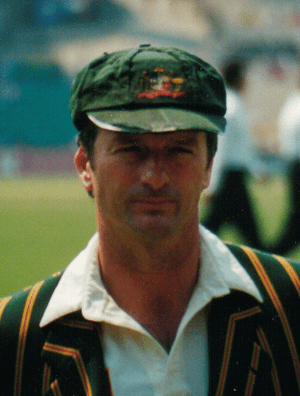Ten Little Known Cricketing Facts :: Learn How to Play Cricket | Cricket Tips | Cricket Batting Tips & Cricket Bowling Tips
Ten Little Known Cricketing Facts
From: Ian Canaway
www.CricketSecrets.com
In this short article I want to challenge your cricketing knowledge and hopefully give you some insight into some things you probably don’t know about cricket.
Firstly, I want to look back into the history of cricket
Did you know…
The cricket bat did not begin life as we know it today. In fact, originally it was curved; comparable to a dinner knife. Its form was altered in 1746 when it was decided that the shape was not conductive to good hitting and favoured the bowler overwhelmingly. Only after this modification was the practice of blocking or stopping adopted in the game.
The regulations governing the size of the bat were updated several years later after a batsman attempted to play with a bat the same width as the stumps (see Young Cricketer’s Tutor for the full story). The width was subsequently limited to four and a quarter inches and has remained so ever since. Interestingly, no such restrictions specific to the height of the bat are in existence.
How long were the longest and shortest matches in cricket history?
The longest game in the sport’s history was in 1938 between England and South Africa and lasted a marathon nine days; an ultimate test of endurance even by cricketing standards! Since then the laws/rules have changed to limit the length of matches.
At the opposite end of the scale, the shortest recorded game was played in 2008 when South Africa’s women’s team bowled out Bermuda for just ten runs.
Who actually plays cricket?
It is well known that cricket is a hugely popular sport, but a comparatively small group of nations dominate its top flight. Despite this, cricket is played competitively in more than 100 countries; that’s more than half of the countries in the world.
It is also the recognised national sport of 11 countries including Zimbabwe, India and Barbados. Interestingly, this list does not include England or South Africa, two of the most eminent cricketing nations.
Mahendra Dhoni in action (Image via Wikipedia)
Who is the highest paid player?
Despite recent media interest in the rapidly increasing wealth of the game, no cricketer features in Forbes Top 30 Highest Paid Athletes 2011. Mahendra Singh Dhoni is currently recognised as the world’s highest paid cricketer with total earnings of $10m in 2011.
Although not traditionally thought of as such, cricket is a physically demanding sport demanding high levels of fitness from its players. The ICC has recently stressed the importance of fitness training, components of which include interval training, core stability work and cross training. This is something I’ll be covering in much more detail on CricketSecrets.com very soon.
How many ways can a batsman be out?

Steve Waugh (Image via Wikipedia)
There are ten ways in which a batsman can be called out in cricket; these include the familiar scenarios of being caught or run out, along with the more unusual such as double hitting and timing out.
Strange superstitions…
Superstition affects many of cricket’s most successful players. Yuvraj Singh believes that his choice of bandana shapes his batting performance, Steve Waugh carried a red handkerchief in his pocket whilst playing and Mike Atherton refused to be interviewed if he was ‘not out’ overnight.
If you know some more little known facts about cricket or have a unusal supersition – tell us – use the form below to post your comment.
All the best,
Ian Canaway
www.CricketSecrets.com
P.S. Now go play some cricket!
P.P.S. If you’re not already getting our Free Cricket Tips Newsletter, use the form below to sign up now…
Claim Your FREE CricketSecrets.com Training TipsFill out the form below and you’ll immediately start receiving your FREE tips to help you learn how to play great cricket regardless of your age or ability! |
Republishing or distribution of content is NOT permitted. All content is Copyright, Ian Canaway & CricketSecrets.com.
Categories : News
